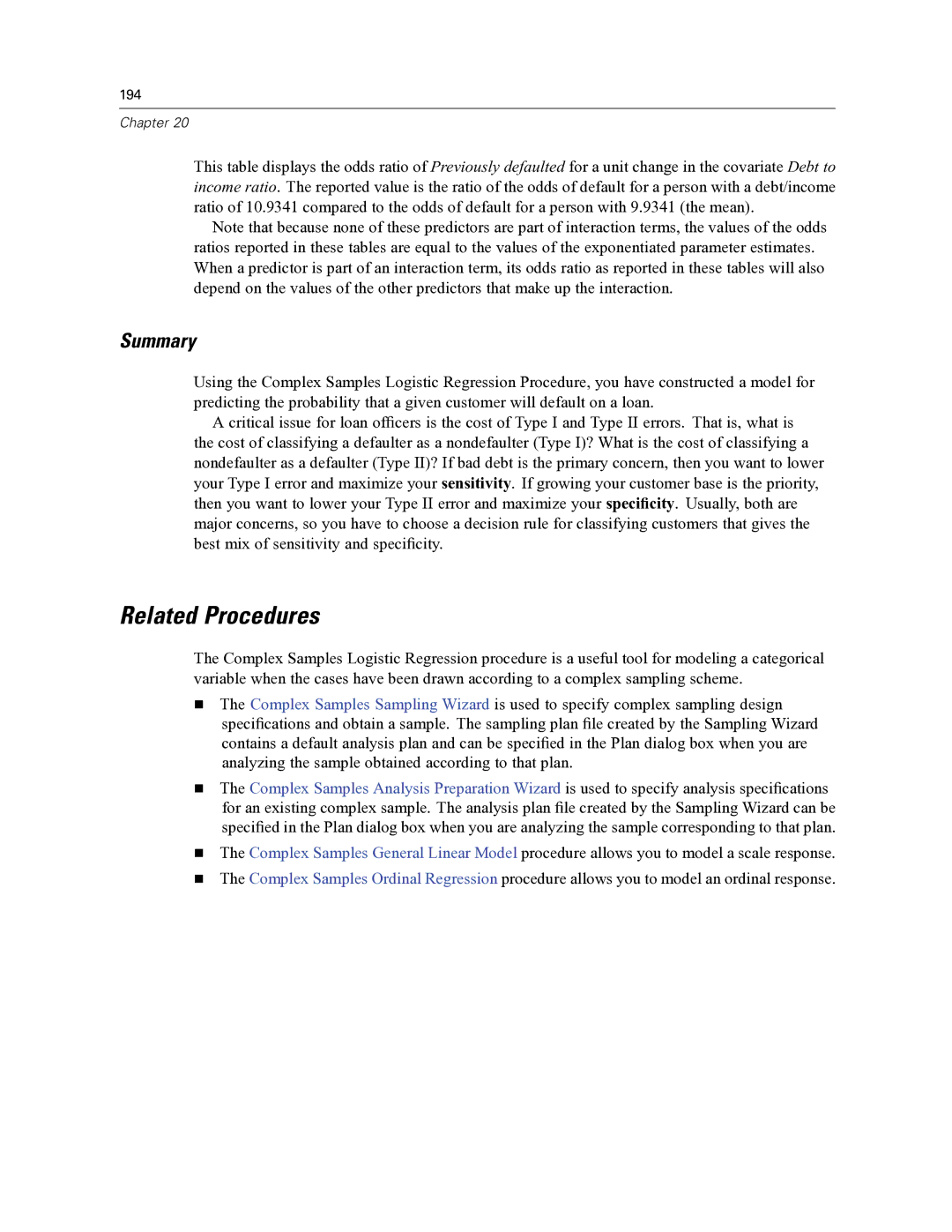194
Chapter 20
This table displays the odds ratio of Previously defaulted for a unit change in the covariate Debt to income ratio. The reported value is the ratio of the odds of default for a person with a debt/income ratio of 10.9341 compared to the odds of default for a person with 9.9341 (the mean).
Note that because none of these predictors are part of interaction terms, the values of the odds ratios reported in these tables are equal to the values of the exponentiated parameter estimates. When a predictor is part of an interaction term, its odds ratio as reported in these tables will also depend on the values of the other predictors that make up the interaction.
Summary
Using the Complex Samples Logistic Regression Procedure, you have constructed a model for predicting the probability that a given customer will default on a loan.
A critical issue for loan officers is the cost of Type I and Type II errors. That is, what is the cost of classifying a defaulter as a nondefaulter (Type I)? What is the cost of classifying a nondefaulter as a defaulter (Type II)? If bad debt is the primary concern, then you want to lower your Type I error and maximize your sensitivity. If growing your customer base is the priority, then you want to lower your Type II error and maximize your specificity. Usually, both are major concerns, so you have to choose a decision rule for classifying customers that gives the best mix of sensitivity and specificity.
Related Procedures
The Complex Samples Logistic Regression procedure is a useful tool for modeling a categorical variable when the cases have been drawn according to a complex sampling scheme.
The Complex Samples Sampling Wizard is used to specify complex sampling design specifications and obtain a sample. The sampling plan file created by the Sampling Wizard contains a default analysis plan and can be specified in the Plan dialog box when you are analyzing the sample obtained according to that plan.
The Complex Samples Analysis Preparation Wizard is used to specify analysis specifications for an existing complex sample. The analysis plan file created by the Sampling Wizard can be specified in the Plan dialog box when you are analyzing the sample corresponding to that plan.
The Complex Samples General Linear Model procedure allows you to model a scale response.
The Complex Samples Ordinal Regression procedure allows you to model an ordinal response.
